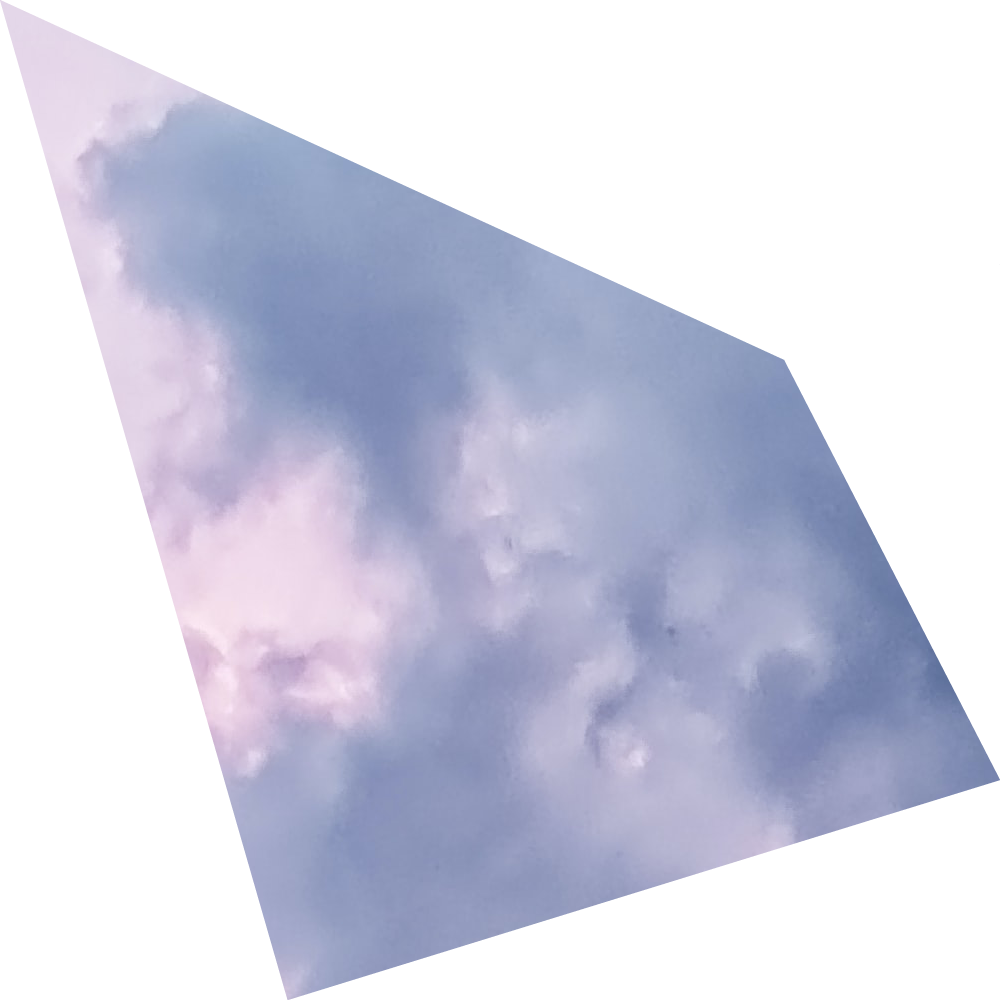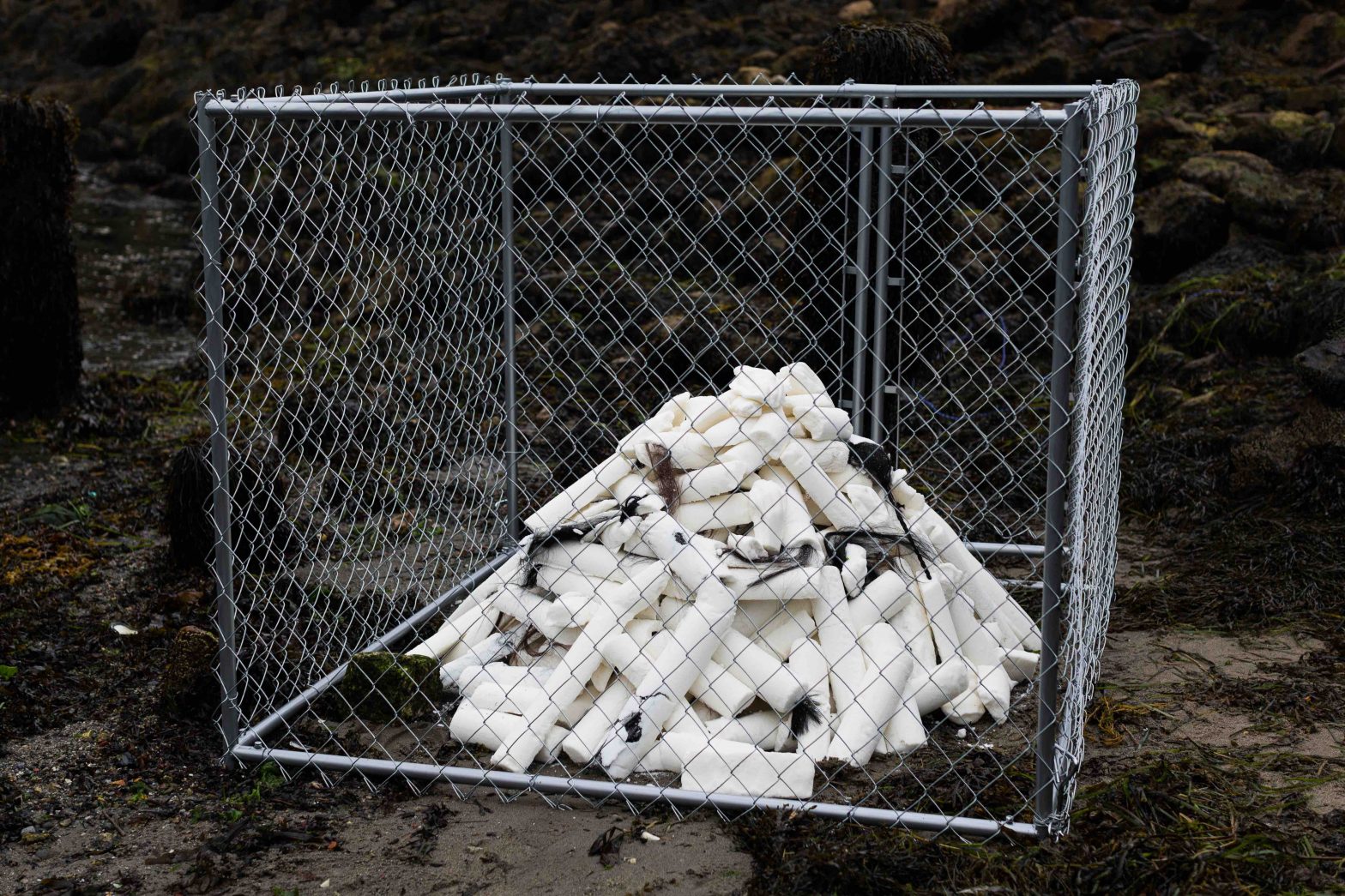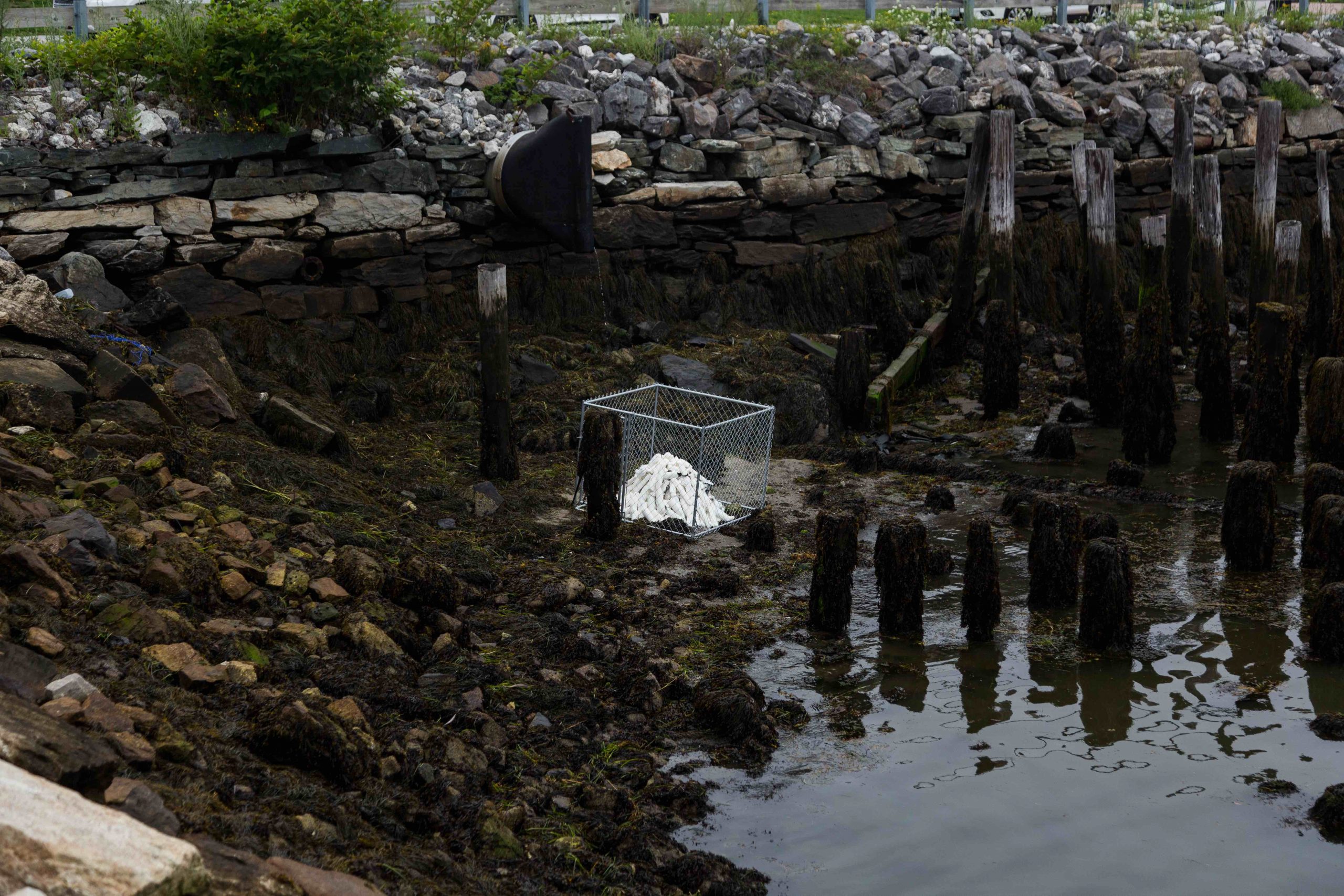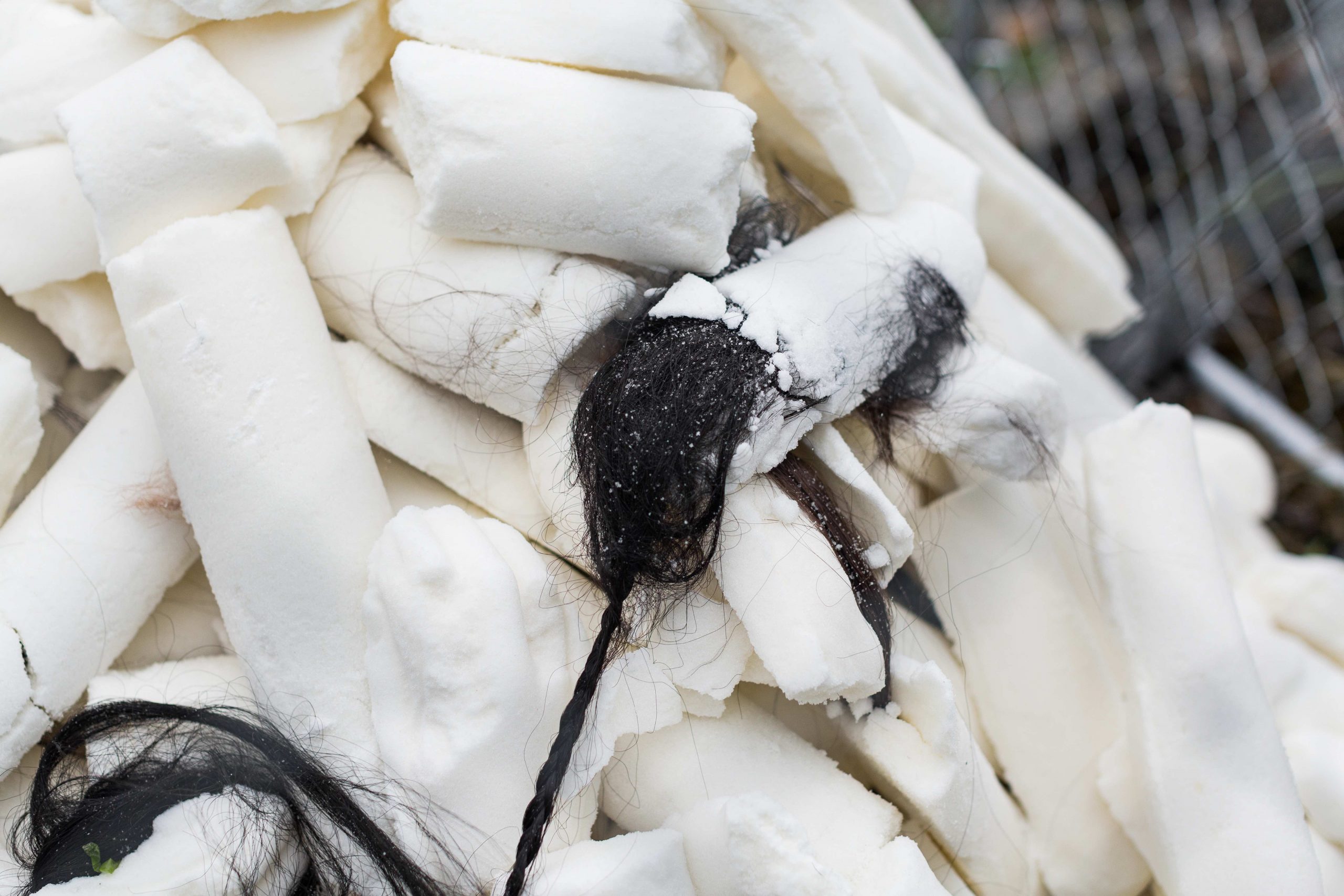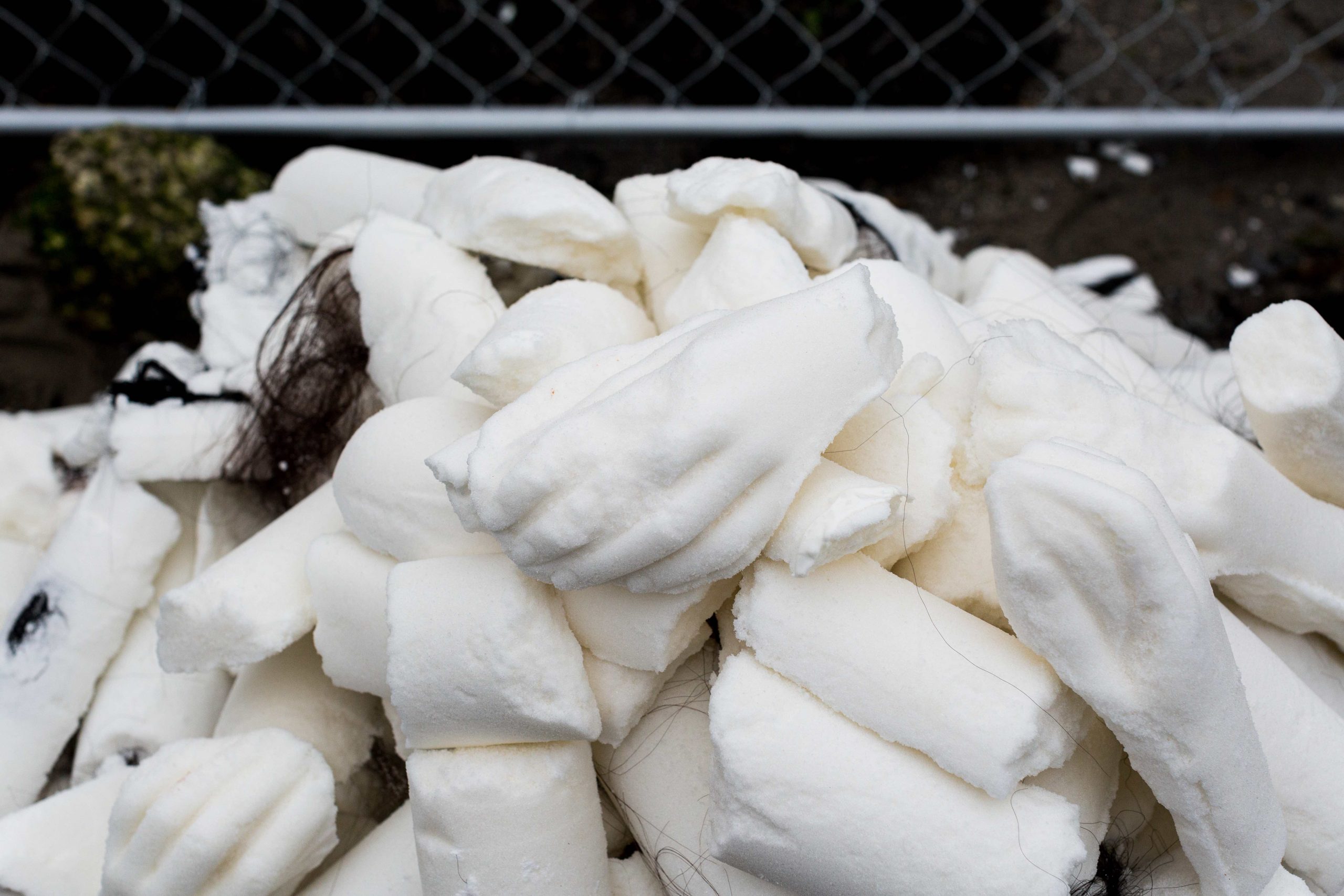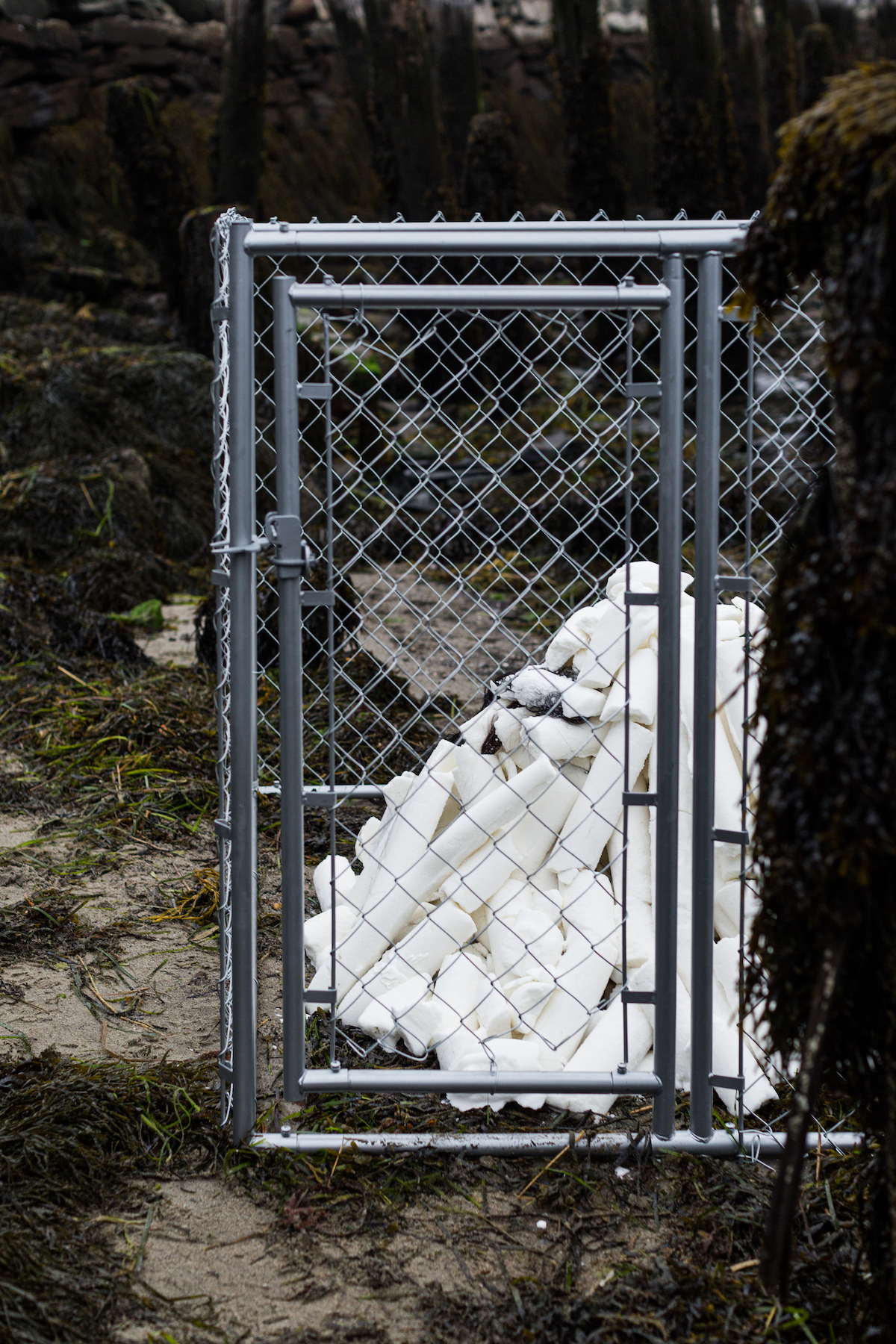historical silencing II
- Veronica Perez
chain link fence, sugar, hair, documentation by Justin Levesque and Ian MacLellan, 2021.
Artist Statement
This Is the second iteration of historical silencing.
TW: death, medical malpractice, sexual assault
I want to acknowledge that the landscape this installation resided on is stolen land from the Wabanaki people. This work touches upon how colonialism was the total erasure of all folx creating erasure on all sides of anyone outside the realm of witnesses. I want to acknowledge that the founding of Portland Maine is and was guided by white supremacy and colonization.
The Latinx/Latiné population is complicit in settler colonialism but also face oppression because of the nature of white supremacy. All Black, Indigenous, AAIP, and People of Color have had to navigate relocation and resettling for survival or forces outside of their control largely due to white supremacy and colonialism. We owe Indigenous folx sovereignty and there are mutual aid networks and action plans you can take.
- Find out whose’ Indigenous land you are on: https://native-land.ca // I reside on Wabanaki, Mi’kmaq and Wolastoqey land.
- Give money and reparations to the Indiginous organizations in your community as a way to begin the process of spreading community group and equity
- Sign petitions to change in your community.
- Self educate.
- Story share – tell at least one person about what you’ve learned and help spread awareness and education for all.
Anger swells
Abolition is the dismantling of systems.
It is the upend of the normal to the other
The other which is powerful
The one you have forgotten for so long
That you tried to suppress.
In my worldview, abolition is the unification of people working together to create change. This can be done through community organizers using their platform to feed the community or a group of artists working together to pass on different experiences to the larger community.
This creates safety and security.
It creates community.
It is a revolutionary act.
In January of 2021, in New Jersey, at the Edna Mahan Correctional Facility for Women, 41 guards have been fired due to horrific sexual attacks on prisoners. (“As someone who was a prisoner myself, “Prisoner” is the most accurate term for someone in prison…One anecdote about this: I was once disciplined fairly harshly in a California women’s prison for referring to myself as a prisoner while speaking to an officer. In our conversation, the guard interrupted me and told me I was a female inmate, and not a prisoner. He said that referring to myself as a prisoner was against rules and furthermore subversive to the order of the facility.” – Kathleen Culhane.)
In September of 2020, Dawn Wooten brought to light the forced hysterectomies on immigrant women inside of an ICE detention center in Georgia.
In July 2105, Sandra Bland was found hanging in a cell in Texas after a pretextual traffic stop.
These are just some of the many recent violent attacks on vulnerable BIPOC folx in the PIC (Prison industrial complex).
Safety and security.
This is what we want.
The PIC must be abolished and community/mutual aid programs must provide care for the community. If we had housing, food, healthcare, childcare available to all folx, the community would feel safe and secure in themselves to not only live but to thrive.
Artist Bio
Veronica A. Perez is a mother, artist, writer living in Westbrook, ME. She is a political artist and activist and believes that art has the power to change societal norms. Their work focuses on a fractured identity and attempts to repair that part of the self through tropes, kitsch, personal stories and experiences. Utilizing artificial hair and other unconventional materials in her sculptural works – she creates intense personal moments by means of material hybridization and ideals of beauty. Material fragility echoes sentiments of a lost self, and at the same time comments on contemporary Latinx and feminist issues. Recently, she has been working at the intersection of identity, vulnerability, protection, and power through the facade of dark absurdity using materials such as sugar, fake hair, chain link fences, and fake sunflowers. Recently in 2020, they were awarded the Ellis Beauregard Visual Arts Fellowship, and they are also a 2021 resident at the David C. Driskell Fellowship at the Black Seed Studio.
